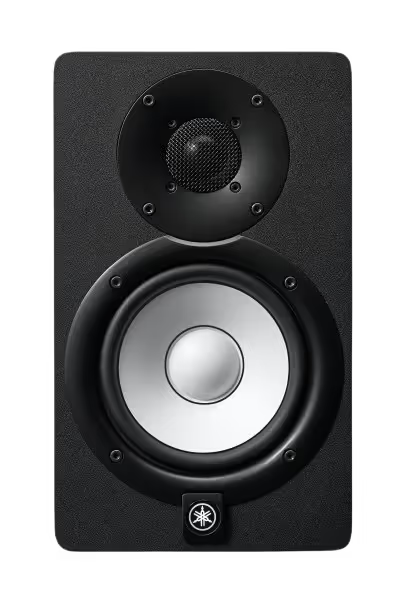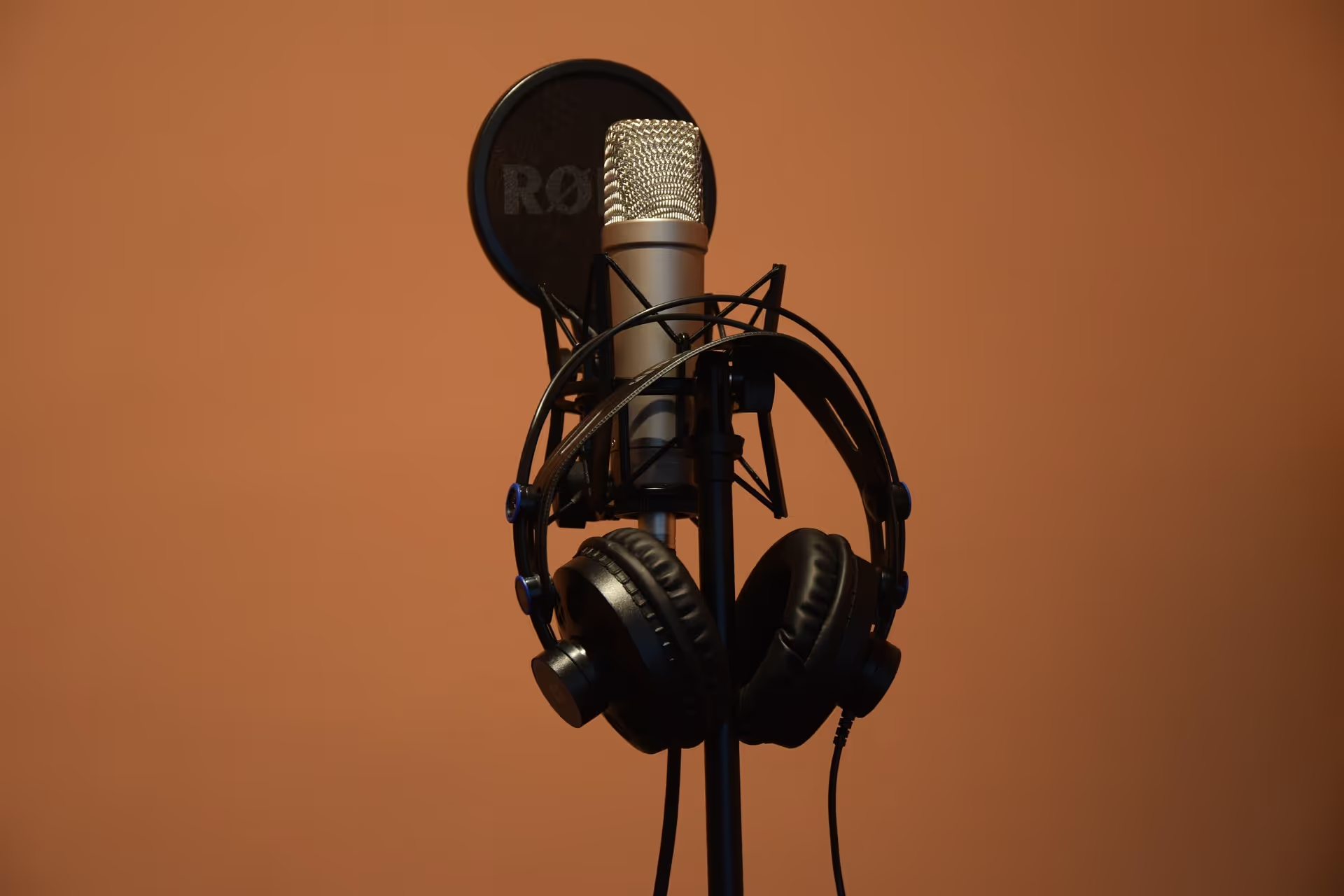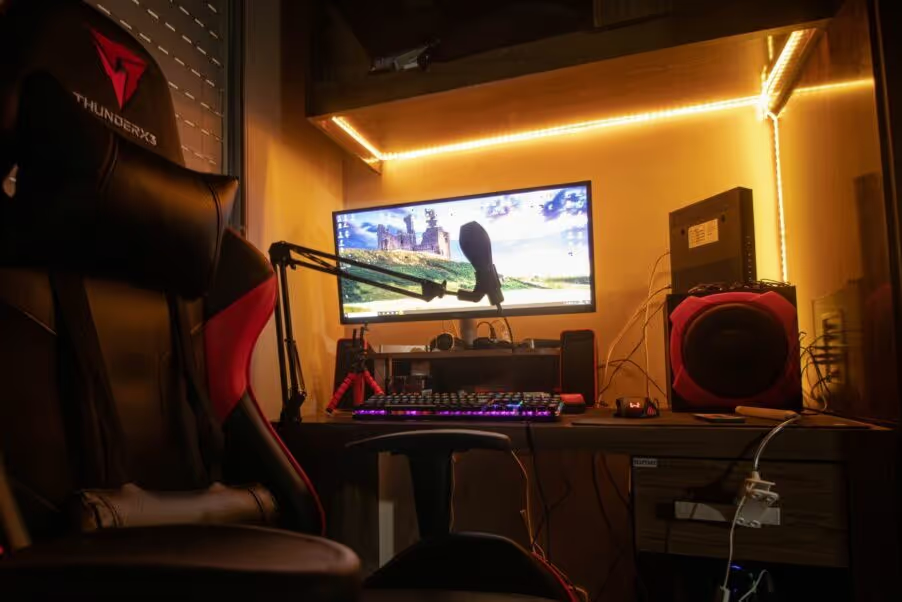
You’re looking for the best studio monitors to help you produce music.
Let’s compare the best monitor speakers for your studio and what makes them great for specific production work.

Famous Yamaha users: Kygo, Finneas, Travis Scott
The Yamaha HS5 audio monitor is an upgrade from the previous HS4 model. The HS5 monitor has a 5-inch woofer, which is bigger than the HS4’s 4-inch woofer. The bigger woofer makes the bass sound fuller and deeper. You’ll notice more low-end when listening to kick drums or bass lines. But this monitor can’t reach the super low bass that a subwoofer can.
Like the HS4, the HS5 monitor gives you clear and accurate sound. You’ll be able to hear every detail in your recordings and mixes. The vocals will cut through the mix nicely. And the highs from cymbals and hi-hats will sound crisp without being harsh.
The HS5 monitors also spread the sound out wide like the HS4. This is good if you’re songwriting with others in the room.
Overall, the Yamaha HS5 audio monitor improved on the previous HS4 model. The bigger woofer provides better bass you can feel. But for true deep bass, you’ll still need a subwoofer. The HS5 keeps the clear sound and wide space of the HS4. This makes the HS5 a nice step up over the older model.


Famous KRK users: John Fields, Ben Grosse, Dave Isaac
The KRK Rokit 7 G4 speakers are a great monitor choice for home studios. The sound quality is crystal clear, letting you hear all the little details in your mixes. The bass from the 7-inch woofer sounds punchy and defined without getting muddy. The 1-inch tweeter makes the mid and high frequencies sound smooth and precise.
This clarity can help you make better mixing decisions when doing EQ and balancing levels. The speakers also create a nice spacious soundstage, giving the impression of 3D space. The rear DSP lets you tune the speakers to your room’s acoustics for better sound.
Overall, the G4 is a big upgrade over the older Rokit models. The improvements to the transparency and tonal balance give your mixes more depth and life.
For beginners getting serious about home recording, the Rokit 7 G4 speakers are a smart investment. Their accurate sound will help train your ears and make mixing easier as you build your skills.


Famous Adam Audio users: Adam Vandal, Yike Jia
The Adam Audio T7V monitors are an excellent choice for mixing and mastering audio. They provide very accurate and clear sound that allows you to hear subtle details in your mixes. This helps you make precise adjustments to get the best possible sound.
These monitors use a 7-inch woofer and 1-inch tweeter made of high-quality carbon fiber material. This gives audio that is true-to-life across bass, mids, and high frequencies.
An easy-to-use software lets you calibrate the monitors to your room’s acoustics too. This further improves what you hear from the speakers.
The T7Vs give you plenty of clean, distortion-free volume if you need it. And they allow flexible positioning in your studio space thanks to the rear ports.
In short, if audio precision matters to your work, these monitors empower you to make better mixing and mastering decisions. They provide the resolution and accuracy needed to get great results with your projects.
While the T7Vs are an investment, they pay off considerably when you consider the time and frustration they save. You’ll have confidence in what you’re hearing and clarity to polish your work to a professional standard.


The IK Multimedia iLoud Micro speakers punch above their weight for small home studios. These compact monitors sound as good as full-sized professional studio speakers despite their tiny footprint.
Two built-in amplifiers provide 50 watts of crystal-clear power. Even at high volumes, the sound stays free of distortion. You get accurate bass, mids, and highs just like in a recording studio. This neutral sound lets you mix music properly.
The iLoud Micros work with most devices. Easily connect headphones, mics, keyboards, or phones using the inputs in the back. The Bluetooth wireless pairing also lets you stream audio from mobile devices.
Smart features improve the sound. Point the monitors in any direction you want – the sound still reaches your ears evenly. The iLouds smartly fix issues caused by being close to walls or corners.
Though portable, the sturdy metal builds secure firmly to stands. With professional studio sound from these tiny speakers, upgrading your home recording space is now affordable.
Adding wireless mixing capability and some EQ presets would make the iLoud Micros even more flexible for home studios. But even as-is, they pack impressive power into small packages.


The JBL 305P MKII monitors are a great choice if you want good sound quality without spending too much money. They make all the small details in the audio clear. You can hear parts you may not have noticed before.
These audio monitors are easy to set up. Just place them in a good spot away from the wall. Once positioned correctly, they will sound amazing with clear highs and deep lows. The high treble sounds may be a little too sharp at first for some people.
But this helps make the audio very crisp and detailed. After listening for a while, you get used to it. The 5-inch woofer gives deep, punchy bass. And the 1-inch tweeter makes vocals sound crystal clear. With the JBL 305P MKII monitors, you’ll be able to hear all the small details.
This makes the listening experience a lot more enjoyable. These provide very accurate and balanced sound reproduction, especially for the price. If you want great studio monitors without spending too much, definitely consider these JBL monitors.





How far apart should studio monitors be?
To get the best sound, your studio monitor placement should make an equal-sided triangle with your listening spot, usually between 4 to 6 feet apart. This setup makes sure your music or any audio sounds clear and balanced. If your monitors are at the right height, with the audio monitors pointing directly at your ears, you’ll hear sounds more accurately. You can use our speaker placement calculator to customise our recommendations to the specific measurements of your room.
This is especially important when you’re mixing or making music, as you want to catch every detail. If your room is a bit tight, small adjustments like tilting the monitors so they’re aiming at your ears can make a big difference.
You might also try adding some soft materials around your room, like curtains or foam panels, to stop echoes and make the sound even better. Playing around with the setup to see what sounds best in your space is a good idea.
Remember, the goal is to make a space where you can hear everything clearly, whether you’re jamming out or focusing on the fine details of your mix.
How high should studio monitors be?
The ideal height for your studio monitors is at ear level when you’re sitting down. This ensures the sound travels straight to your ears without bouncing off things that could change how it sounds. You can use stands or foam pads to raise or lower your monitors to the perfect height.
Making sure they’re at the right height helps everything sound clearer and more accurate. To make it even simpler, think of setting up your monitors so they form a perfect triangle with you, making sure they point directly at your ears.
This setup helps keep the music sounding just right and makes sure you’re hearing everything accurately. It’s like adjusting your chair to see your computer screen better but for your ears.
Plus, getting this right means you can listen to and mix music comfortably for hours, without missing a beat or getting tired ears.
Can studio monitors sound as good as big speakers?
Sure! Studio monitors are high-definition speakers that make sure sounds and vocals are exactly as they were recorded. For music producers, content creators or anyone who loves listening to clear and detailed audio. They might be smaller than some big, room-filling speakers, but they deliver incredibly clear sound.
For those concerned about not getting deep tones, adding a small extra speaker called a subwoofer can enhance those lower sounds without compromising clarity. Studio monitors aren’t just for professional studios; they’re excellent for anyone who wants to experience audio in its truest form.
With some straightforward adjustments and proper placement, these speakers can sound as impressive as larger ones. They reveal every nuance in the audio, allowing you to appreciate aspects you might have missed, and elevating your listening experience.
Can studio monitors be used for games?
Studio monitors can make your games sound super clear and detailed. Imagine setting them up around your room to get a surround sound feeling, like you’re right in the middle of the game’s action.
These speakers are great at letting you hear every little sound, from the quiet footsteps of someone sneaking up behind you to the loud explosions in battle.
They don’t change the sound by adding extra bass or treble, so everything you hear is exactly as it was meant to be. This can make your gaming experience much more fun and realistic, helping you feel like you’re truly inside the game world.
Plus, hearing these detailed sounds can give you a heads-up in competitive games, letting you react faster to what’s happening around you. By using studio monitors, you can turn your gaming area into a super cool and immersive zone, making every game you play even more exciting and enjoyable.
Does the type of cable matter?
The cables you use can slightly affect how good your monitors sound. Using the best speaker cables you can afford can help keep the sound clear and reduce buzz or interference. For active monitors, balanced cables (like XLR or TRS) are the best choice because they’re good at blocking out noise.
Good cables last longer because they’re made tough, so they don’t break easily when you move them around or plug them in and out a lot. This means your sound stays clear and strong over time.
Plus, in places with lots of electronics, better cables can stop extra noises from messing with your sound. They have special covers that keep unwanted noise out, so what you hear is just what you want to hear.
Also, good cables fit better and don’t come loose, so you won’t get sudden crackles or silence. And, they help you keep things tidy, with just the right amount of cable where you need it.
So, spending a bit more on good cables is a smart move if you care about keeping your sound perfect. It’s like making sure every detail of your music or audio comes through just right, without any annoying extras.
What is the difference between HiFi and monitor speakers?
When you start looking into speakers, you’ll often find two kinds mentioned: “HiFi” and “Monitor.” They’re both designed to let you hear sounds, but they serve different purposes. Let’s make it easy to understand.
HiFi Speakers: HiFi stands for High Fidelity, and these speakers are like the storytellers of the speaker world. They’re built to make all the sounds you play through them feel more alive. If you’re listening to a podcast, the voices might sound richer, or if you’re watching a nature documentary, the rustle of leaves or the chirping of birds can seem more vivid. HiFi speakers are great for when you want to relax and feel the atmosphere of what you’re listening to.
Monitor Speakers: Monitor speakers are the straight-talkers. They don’t dress up the sound with extra richness or sharpness. If you’re editing a video or working on a presentation that includes voice recordings, monitor speakers help by making sure you hear everything just as it is.
This way, you can make sure that your final project sounds clear and is easy to understand, no matter what kind of speakers it’s played on later.
So, which should you choose? If you’re into audiobooks or podcasts and want every word to feel alive and full, HiFi speakers could be what you need. They enhance the sound to make listening a more captivating experience.
If you’re more into creating content, like making videos or recording speeches, and you want to check the clarity and quality of your audio, monitor speakers would be better for you. They give you a clear picture of what your audio sounds like, so you can make it the best it can be.
To sum it up:
- HiFi speakers = immersive and rich sound for enjoyment.
- Monitor speakers = clear and accurate sound for creating content.
It’s like choosing the right tool for the job – some tools are for crafting things, and others are for enjoying the finished product. Decide what you’ll be doing most, and that’ll guide you to the right type of speaker.





